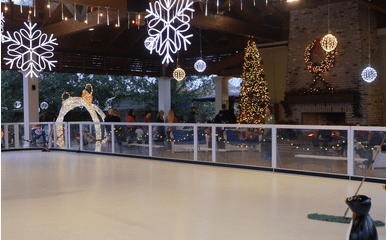Uncategorized
Benefits of Virtual Reality
Virtual reality (VR), which is the ability to create a simulated environment, has been around for decades. For example, flight simulators have been used to train pilots since the 1950s.
But today’s VR offers much more than just a chance to fly an airplane without leaving the comfort of your home: it also lets you experience something entirely new and different from reality—from exploring new planets to diving deep into another person’s mind. VR can be used for a lot more than just entertainment purposes on platforms like Dreamcam.com and other websites that offer VR streaming.
Ways virtual reality is changing things
Virtual reality (VR) is a computer-simulated environment that can be explored and interacted with by a person. This interaction is achieved through specialized electronic equipment, often including a head-mounted display.
In entertainment, VR has been used in games and movies to create immersive experiences. The best-known example of this is probably the movie The Matrix, which made use of special effects to create an almost physical experience for viewers as they watched actors on the screen go through their motions in front of them.
In medicine and architecture, virtual reality can be used to test how new equipment works without having to try it out on real patients or build prototypes that might cost too much money or take too long before you know whether they work well enough for what you want them for.
There are many ways that VR changes how we do things in our everyday lives. Here are just some examples of how virtual reality helps us with everything from art and music creation all the way up through construction planning.
Immersive art, music, and movies
You may have heard of virtual reality, but do you know how it works? Virtual reality allows you to experience something that would not be possible in real life. It can be used for art, music, and movies.
VR is used to create immersive art. For example, an artist can create a painting where you walk through a forest or go underwater and swim with dolphins! You will see everything from different perspectives from what your eyes are able to see!
Similarly, VR is used for music because it allows musicians to play instruments live on stage with their audience members at home or anywhere else in the world! These musicians wear special VR glasses so they can see each other’s faces while playing music together online.
Finally, filmmakers use Virtual Reality technology along with traditional filmmaking techniques such as editing the footage together into one cohesive storyline using professional software programs.
Medical diagnosing and treatment
The benefits of virtual reality extend beyond entertainment. The technology can be used to improve the healthcare industry by helping doctors understand how our bodies work, which will lead to better diagnoses and treatment plans.
VR is being used in many fields of medicine, including neurology, cardiology, and pulmonology.
The brain is a complicated organ that many people don’t fully understand—including doctors! For example, when you look at a person’s brain on an MRI scan or through a microscope, it may not be immediately clear what you’re seeing or how the part of their brain that shows up on the screen correlates with what they are experiencing (as opposed to someone else).
With VR devices like Oculus Rift or Google Cardboard headsets connected to an MRI machine’s display screen via HDMI cable, doctors can see 3D images of patient’s brains as if they were standing right next to them inside this virtual world. This contributes to easier diagnostic processes because everything looks more understandable than just looking at static pictures from traditional imaging techniques such as X-rays.
Architectural design and construction planning
VR is used to design buildings and structures, as well as interior space, outdoor space, infrastructure, and landscaping.
In the past, architects would use a 3D model of the building they were working on. But this did not allow them to get an accurate feel for how it would look or function in real life. Using VR allows them to step inside the structure. This means that changes can be made before a single brick has been laid down, saving time and money on building projects.
Smarter and more efficient work
VR is a great way to train employees, test products in different settings, make products or sell them directly to consumers. This all-encompassing immersive environment allows your workers to better interact with their work, whether they’re manufacturing something or designing an office layout. Using this technology will allow them to see how their product interacts with consumers in real-life situations instead of just relying on simulations or blueprints from the factory floor.
The same goes for designers. The ability to create 3D models of buildings before the construction begins enables them to visualize exactly what they’re building. It’s also essential for companies that want their customers to see what their product looks like before buying it.
Saving resources, time, and money
As you’ve probably guessed, virtual reality is fun and incredibly useful. One of the most important benefits is that it can reduce the need for physical prototypes, testing, travel, and meetings. This saves resources like time and money while also helping you to stay in touch with your customers. If you’re working on a new product line or opening up a new office in another country, then this will be particularly helpful as it reduces the costs associated with physical inventory too!
Conclusion
We’re still in the early stages of VR and we don’t know where it will go. This technology is growing rapidly, and we expect that in the future, it will be used by more and more people who want to experience the world from a different perspective.
Whether you see this as a positive or negative development is up to you! Regardless of how you feel about it though, there’s no denying that virtual reality has already made an impact on our lives and will continue doing so for years to come.
























